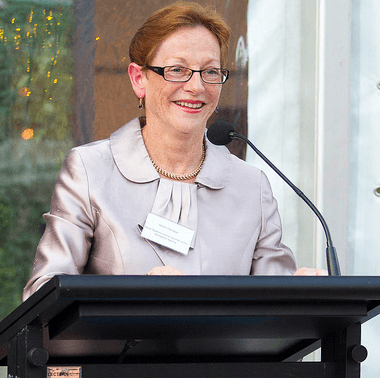In this opinion piece, Equal Opportunity for Women in the Workplace Agency director Helen Conway looks at the slow progress being made toward achieving gender parity, but points to landmarks this year that look set to make a difference – including new legislation.
Around Australia through March we at the Equal Opportunity for Women in the Workplace Agency have been toasting the 125 organisations awarded the EOWA 2012 Employer of Choice for Women citation. The citation recognises their efforts in areas such as closing the gender pay gap, placing women in executive management and offering a flexible workplace for those men and women with caring responsibilities.
Most importantly, the citation requires the organisation’s CEO to be the driving force behind a culture that supports the advancement of female employees.
On our roadshow across Australia, many of these executives told us how gender diversity had contributed to better organisational performance. They also highlighted the competitive edge they’ve gained in attracting and retaining the best people. In Australia, with significant skills shortages, low unemployment and relatively low female labour force participation, this argument would seem compelling.
The surprise is that so few CEOs are acting on this economic logic. And that, after decades of debate, gender equality in the workplace is still elusive.
The gender pay gap is of particular concern. At 17.6 percent, it is about the same as it was 25 years ago, causing a serious financial impact on the earnings of women as well as their retirement savings. Yes, a far higher proportion of women now have paid work and spend more time working but, sadly, women are two and half times more likely to live in poverty in their old age than men.
Progress on closing the gender pay gap has been slow because men and women are concentrated in different occupations, industries and job levels, because women still do more of the family and caring work and because many jobs done by women are still undervalued. The recent decision by Fair Work Australia in relation to the social, community and disability sector was a welcome development in properly valuing work in a female-dominated sector. However, there is still a long way to go.
As for leadership, the last EOWA Census of Women in Leadership in 2010 showed little change since our first census in 2002. Encouragingly, these results did promote much debate and some improvements. The Australian Institute of Company Directors tracks board appointments and the most recent data shows women comprise 13.8 percent of ASX 200 board directors, up from 8.4 percent in 2010. The ASX Corporate Governance Council has recommended that listed companies establish and report annually on their diversity policy, including measurable objectives to achieve gender diversity, and the proportion of women employees at key levels through the organisation.
Results from the first year of the ASX recommendations will be reported during the course of the year. And the outcomes of the EOWA’s 2012 Census will be published in November. So watch this space.
In relation to caring responsibilities, there is still much work to be done. While some flexible work options are available, too few men are accessing these arrangements. They are still seen as “solutions” to the “problem” of women’s employment rather than “business as usual” good practices, supporting all employees in managing the full range of their work and personal responsibilities.
My sense is that Australians, at least at an emotional level, support gender equality in the workplace. But why haven’t these good intentions translated into outcomes?
We live of course in a society which is male dominated in many respects, with gendered attitudes (“men don’t need to – and nor should they – access flexible work arrangements”) and with worker stereotypes (“managers must be male and work full-time”). There’s also our unconscious bias which maintains homogeneity and shuts the door on diversity.
Strong leadership will challenge this status quo and drive change. Gender equality must be aligned with business strategy and established as a business priority. It can no longer be just something human resources looks after. And, as with any business imperative, accountability is essential to making gender equality happen – establishing clear action plans, measuring and transparently reporting outcomes and holding managers to account.
Legislation is now before Parliament which will significantly change the way employers annually report to EOWA on their progress to gender equality. This will help drive change.
The case for gender equality is clear and it’s time for concerted action. Well-meaning talk not tied to tangible outcomes threatens to taint the issue and consign it to history as a failure. We need to build on past achievements with urgency.
– Helen Conway is the Director of the Equal Opportunity for Women in the Workplace Agency. This article draws on her recent Kingsley Laffer Memorial Lecture delivered at the University of Sydney, which is available here.

